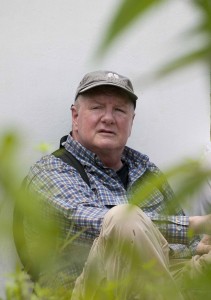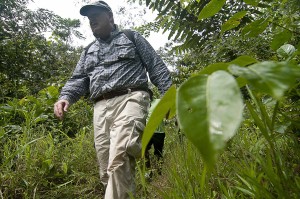
As of the end of September 2015, I’m about 65,000 words into a projected 170,000 word first draft of The Bitter Cup: The Life and Times of Jim Jones, Peoples Temple and Jonestown. Projected lengths always turn out to be wildly miscalculated. Like children, books grow up to be whatever they want, not what parents/authors intend. But I’m roughly one-third of the way. The completed draft is due to Robert Bender, my Simon & Schuster editor, on March 31, 2016. Since I’m maintaining a steady writing pace, I hope to beat that deadline by at least a month, hopefully two, which means the finished book might be published before the end of the year. The wild card is a work interruption that can’t be avoided, since most of October 2015 is taken up by a publicity tour for an unrelated novel from a different publisher. (Income from fiction pays some of my research and travel costs on nonfiction projects.) My publicist for the novel is doing an excellent job of scheduling additional phone interviews and blogger chats. I’m grateful, even as I recognize that each one takes away writing time from The Bitter Cup. I won’t be able to set my own work schedule again until November.
The Bitter Cup is broken into three sections – Indiana, California and Guyana. Since I know that editors like to check on books in progress, I sent Bob the draft section on Indiana, then took a quick trip to New York to meet with him. As always at this point in a project, I was nervous on the way. It’s always possible an editor will say what he’s read so far just won’t do – tear it up and start over. That’s never happened to me yet, but I have plenty of author friends who have experienced it, and some day it may be my turn. Not this time, though. Bob declared that he was very pleased. We went out to lunch at a restaurant quite a bit above my personal pay grade, but that was all right because Bob picked up the check. As we ate things I didn’t recognize – most of the menu was in French, and I have enough trouble with English – Bob said that he hadn’t expected the subjects of Jim Jones and Peoples Temple to be so complex. He’d been prepared for some surprises, but he was particularly struck by all that Jim and Marceline Jones and the early Temple iteration accomplished in Indianapolis. Bob had heard of Father Divine but had no idea of his sprawling evangelical empire, and how it inspired Jim Jones. Belo Horizonte? Jim Jones actually moved to Brazil for a while? And, above all, there were all these fascinating people who became part of Peoples Temple – Archie Ijames, Jack Beam, Patty Cartmell. Would I be telling about any others? I laughed and said that I didn’t even have the Temple moved to Ukiah/Redwood Valley yet. There are so many more stories to tell, so many people and events to introduce to a hopefully wide reading audience. By necessity, the early chapters involving the Temple focus mostly on Jim Jones. But as the Temple grows, so does its story. What to emphasize? What, regrettably, to leave out?
This means the writing process grows harder every day. As the subject becomes more complicated, so does the challenge to get everything right, or at least as close to right as is possible. For any outside historian, some conclusions inevitably are based on best guess. People have conflicting memories; documents suggest different things about the same events. In most nonfiction research, lack of quality material, solid information from reliable sources, is a constant concern. With this one, there’s almost too much.
Take the jungle, for instance. Until I experienced it for myself, I had no idea of just how much was achieved not only in maintaining Jonestown there for so long, but even for being able to build it in the first place.

The site is almost completely overgrown now. The road in has been smothered again with trees and vines and thorn bushes. I was exhausted just by hacking my way in over the last two miles with a photographer and two guides. (And then there was a snake.) I have so much more respect, even admiration, for everyone who built Jonestown and later lived there. I wouldn’t have lasted a week. Now I want readers who’ll never come within a thousand miles of Guyana’s Northwest District to understand all that was accomplished there in founding and maintaining Jonestown.
And maybe that’s my real worry at this point – remembering who I’m writing for. In the process of my work on The Bitter Cup, I’ve met and interviewed people who I want to stay friends with for the rest of my life. They mean a great deal to me. But as I decide what to include and what to leave out, how to describe this scene or that event, I have to think of all the readers who know little or nothing about Peoples Temple. How, using all the available facts, can I best tell the story for them so that they’ll read all the way through to the last page and understand that there was much more to Peoples Temple than Kool-Aid? It’s a responsibility that I take seriously, and I admit that it weighs on me – as, of course, it should.
There will never be a single, definitive nonfiction book about Peoples Temple. There’s just too much for any individual author to completely capture for readers. When I’m done writing The Bitter Cup, I’ll donate all my research materials to the Jonestown Institute so that everything I have will be available to the next writer who wants to try to take things further. Hopefully every book is a step toward greater general understanding. I’ll do my best to make The Bitter Cup a significant one.
(Jeff Guinn’s previous article for the jonestown report is Real History vs. Popular History: A Fresh Look at Jim Jones. Jeff can be reached at skokanguin@aol.com.)